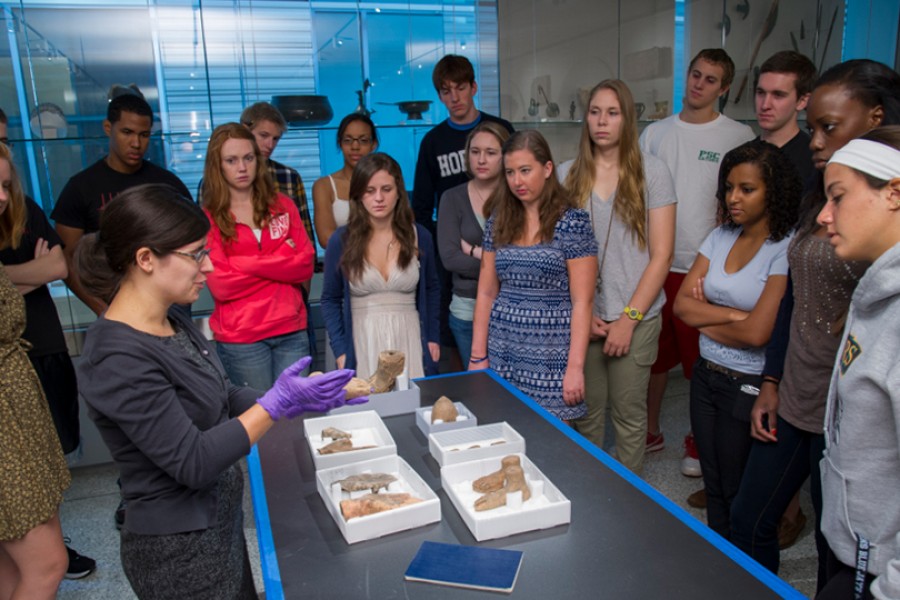The entire Johns Hopkins Archaeological Museum collection will soon be accessible in the classroom and online for the first time in its 132-year history, thanks to new funding from the Institute of Museum and Library Services.
The $136,000 grant was announced today by the IMLS, which awards the highly competitive grants to inspire libraries and museums to advance innovation, lifelong learning, and cultural and civic engagement.
The grant will allow the archaeological museum to hire a full-time collections technician for 31 months to complete the online catalog, a process which has been ongoing for the past four years with the assistance of undergraduate and graduate students at Hopkins. The project will make the entire collection of more than 10,000 museum objects available for teaching and research for the first time in its history.
While the museum collection is already a well used resource on campus, with students in 150 courses visiting the museum for class in the last four years, there are still hundreds of objects in storage waiting to be examined and studied. Last year, the museum's website and catalog had nearly 28,000 visitors, a number expected to rise significantly when the full collection is available, said Betsy Bryan, the Alexander Badawy Professor of Egyptian Art and Archaeology in the Krieger School and director of the archaeological museum.
"This project will transform the way the museum collection is used, making it fully available not only to members of the university community, but also opening the collection more completely to researchers and the public beyond Johns Hopkins."
Since 2010 when the new museum opened as part of the renovation of Gilman Hall, the documentation, preservation, and utilization of the collection has increased exponentially. In the last four years, more than 8,000 objects have been recorded for the first time in a digital, searchable database, and more than 2,000 students have worked with the collection as part of their coursework. However, a portion of the collection remains packed and temporarily stored in another building on campus. Approximately 5,200 objects need to be photographed so that they can be made fully digitally accessible. The new staffer funded by the grant will remedy this situation.
Curator/Conservator Sanchita Balachandran, who will oversee the implementation of the entire project, said, "These changes in the awareness and accessibility of the collection represent a complete transformation in the care and use of the collection. The tremendous success of the museum in engaging students, researchers and visitors has drawn an audience increasingly eager for both physical and virtual access to the objects and their documentation."
Having the collection online as well as on display in its Gilman Hall home will further the museum's mission to foster greater access for teaching, research, exhibition, and long-term preservation. Besides bringing the collection to the world, museum staff will be able to track the number and multidisciplinary scope of courses being taught within the museum. As more archaeological material is made accessible, identified, and researched, the museum will be able to offer new exhibits, public programs and tours highlighting these discoveries, thus engaging a broader public.
Institute of Museum and Library Services museum grants support a wide variety of projects that create learning experiences, strengthen community communities, care for collections and provide broad public access. The grants are highly competitive, said Susan H. Hildreth, director of the institute.
"We enlist hundreds of library and museum professionals throughout the United States to review grant applications and make recommendations on projects most worthy of funding," Hildreth said. "Receiving a grant from IMLS is a significant achievement."
Posted in Arts+Culture, University News








